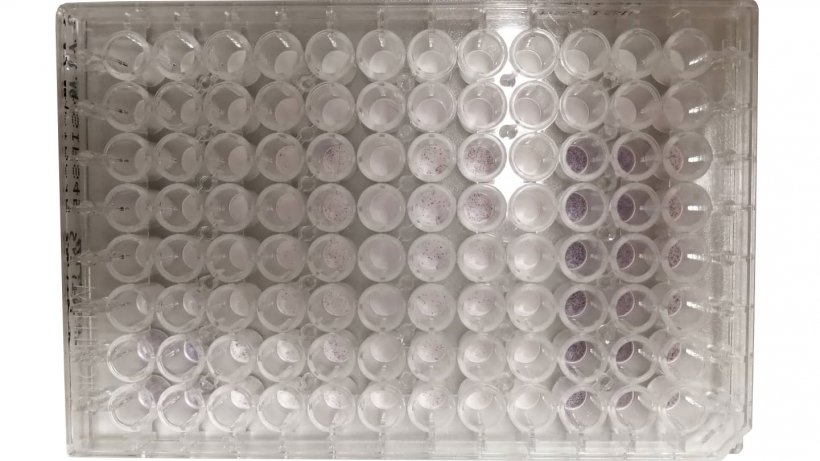Measuring the level of protection of pigs against various pathogens is complex and sometimes unsatisfying. Depending on the pathogen of interest, various measurements of immune reactions against the specific pathogen might correlate with protection. In the case of PRRSV however, correlates of protection are not known, which means there is no lab assay which can definitely answer the question how well a pig is protected against PRRSV.

In order to measure protection, either humoral or cellular responses of the immune system can potentially be measured. The most common measurement of immune responses towards PRRSV is the testing of antibodies by ELISA techniques. ELISA tests usually measure antibodies directed against the nucleoprotein of PRRSV, a highly expressed viral protein. Those antibodies are not correlated with protection and only allow the conclusion if an animal has had previous contact to PRRSV (Lopez, 2007). However, it cannot be distinguished if those antibodies are directed against field virus or modified live virus from a vaccine. Also, those tests do not allow the differentiation between maternally derived antibodies and antibodies actively produced by a piglet.
Other options to measure immune responses and protection of pigs towards PRRSV include the measurement of neutralizing antibodies or cellular immune responses. Both might be involved in protection but their relevance in PRRSV immunity is discussed controversially in the literature. PRRSV neutralizing antibodies often appear around the time when PRRSV is cleared from the blood suggesting a crucial role of neutralizing antibodies in virus elimination. In experimental studies, high doses of neutralizing antibodies prevented transplacental PRRSV infection of fetuses and provided sterilizing immunity to the dam and piglets in utero (Osorio, 2002, Lopez, 2007). However, other experiments showed that PRRSV was eliminated from the blood of infected animals without measurable levels of neutralizing antibodies (Diaz, 2006) or that in the presence of neutralizing antibodies PRRSV could still be isolated from the blood of infected pigs (Vezina, 1996). In the end the role of neutralizing antibodies in PRRSV protection is not completely clear and their measurement in routine diagnostics is not feasible (see below).
Cellular immune responses to PRRSV infection are not as well studied as the humoral immunity although they might be crucial for a protective immune response. The measurement of PRRSV-specific interferon gamma (IFN-γ) secreting cells by enzyme-linked immunospot (ELISPOT) assay is the most frequently performed assay to measure cell-mediated immune responses. Similar to the measurement of PRRSV-specific neutralizing antibodies, current ELISPOT assays are not well suited for routine diagnostics since those tests are labour and cost intense. They require the isolation of cells from the blood or tissues and a re-stimulation of those isolated cells with homologous PRRS virus. Except for the measurement of vaccine induced cellular immune responses, the homologous PRRSV isolate is usually not available for re-stimulation of cells since PRRSV isolation is not routinely performed for each individual farm. The same is true for the measurement of neutralizing antibodies which also requires homologous virus.

The high genetic diversity of the virus is not only complicating laboratory tests but also the estimation of the level of protection of pigs against PRRSV. Several studies have shown that complete protection, i.e. sterile immunity, can be reached by infecting pigs consecutively with the exact same virus (Lager, 1997, 1999). It has also been demonstrated that homologous protection can last long, for at least 604 days (Lager, 1997). However, an animal that is protected against one strain of PRRSV is not necessarily protected against heterologous strains. The level of heterologous protection can vary greatly and is impossible to be predicted. Sequence analysis, particularly when done on partial viral genomes as most common in routine diagnostics (e.g. ORF5), cannot be used for the assessment of protection. In particular, the homology between a specific field virus with different vaccine virus isolates cannot be used for vaccine selection. In addition to the variability of the virus, host factors will also influence the level of heterologous protection. Research mainly done in the US has shown that the host genome, i.e. the genetic background of the pig, is influencing the susceptibility to PRRSV.









